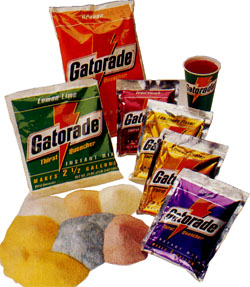The United States Department of Homeland Security’s READY campaign, along with AD Council, and Citizen Corps, announced their sixth annual National Preparedness Month on September 1st. Their purpose is to encourage Americans to be prepared for emergencies in their communities, homes, and businesses. Americans must understand what being ready really means. This month, this National Public Service advertising campaign will promote individual emergency preparedness to respond to emergencies including natural disasters and potential terrorist attacks.
Others who actively participate in this endeavor are the Better Business Bureau, Boy Scouts of America, National Volunteer Fire Council, Home Depot, ASPCA, and the American Red Cross.
This is a true story, from my little home town:
Shortly after 9-11, one of the schools got a suspicious package in the mail. The postmark showed it was from a foreign country, and seemed to have a powdery material seeping out of it, so the secretary immediately reported it to the proper authorities. All types of activities proceeded, as planned, with a HazMat team coming from 90 miles away, emergency responders setting up areas to wash down anyone who was possibly contaminated, hospital locked down, etc. As it turned out, it contained some educational tapes and the packing material had become crushed in the process of being mailed. She was very embarrassed, but she did the right thing, as the materials had not been ordered, and at that particular time, we were all nervous about the unexpected. What we found out was, though, we were really not prepared. Many things were done that should have been done, but not necessarily in the correct order.
In earlier articles we have presented, Being Prepared, and Dog Rescuers in Times of Disaster, we have listed tips on basic safety kits that families should have, as well as ideas for those who rescue animals in emergency situations, so you may want to review them.
It would take time to gather up all the things needed to for an emergency disaster kit, but we want to point out many basic necessities:
- Water: 1 gallon per day, per person, for up to 3 days
- Three-day supply of non-perishable food
- Can opener
- Battery powered NOAA weather radio, and extra batteries
- Flashlight
- First Aid Kit
- Blankets
- Whistle to signal for help
- Dust Masks
- Tools
- Moist towelettes, garbage bags, plastic ties
- Prescription medications
- Pet food, water
- Paper products, towels, plates, etc.
- Cell phone
Natonal Preparedness Month membership is open to the public and private sector organizations. For information, go to www.ready.gov. Businesses, families, school administrators, and individuals should all get involved and spread the word that we must be better prepared.
